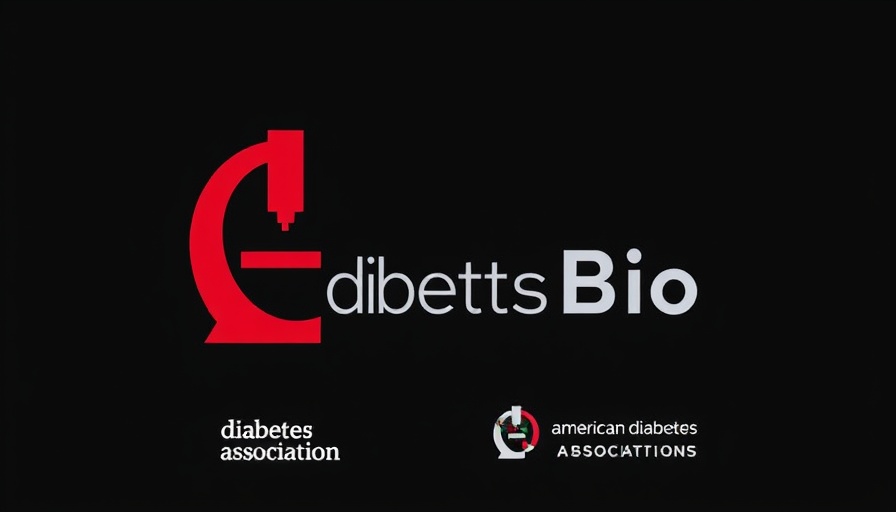
Understanding Your Rights: A Crucial Step for College Students with Diabetes
Transitioning to college life represents a significant milestone, especially for students managing diabetes. It's important to have an understanding of your legal rights and the resources available to support your independence as you navigate a new educational environment. The American Diabetes Association (ADA) offers essential insights elaborating on the legal protections for post-secondary students with diabetes, a topic explored thoroughly in their latest virtual workshop.
In 'Legal Protections for Post-Secondary Students with Diabetes', the discussion dives into critical insights regarding protecting your rights and navigating college life with diabetes, exploring key insights that sparked deeper analysis on our end.
Key Differences Between High School and College Accommodations
While students with diabetes typically had safety nets like Section 504 Plans or Individualized Education Programs (IEPs) in high school, college accommodations function quite differently. In college, the onus falls on the student to identify themselves to disability services and ask for necessary accommodations. Unlike high schools, which are mandated to provide certain levels of care and support, colleges are only required to offer reasonable accommodations upon request. Understanding this shift is crucial.
Legal Protections Under ADA and the Rehabilitation Act
The primary laws ensuring that college students with diabetes receive fair treatment are the Americans with Disabilities Act (ADA) and Section 504 of the Rehabilitation Act. These legislations validate that diabetes qualifies as a disability under U.S. law, entitling students to necessary accommodations to ensure equal access to educational opportunities. Despite the autonomy that college represents, it’s vital for students to understand that they can still enforce these legal rights if they face discrimination based on their medical condition.
The Process of Requesting Accommodations
One of the most paramount actions a student can take post-admission is connecting with their college's disability services office. Each institution has its own protocols, and the specific accommodations that a student may qualify for depend on their unique circumstances. Hence, preparing the necessary documentation, which substantiates the student’s request for accommodations is essential. Documentation could include a doctor’s letter explaining the diagnosis and its implications on the student's daily activities.
How to Effectively Navigate New Independence
The shift from high school to college signifies a newfound independence, one where students rely less on parental oversight. For students managing diabetes, this may mean taking charge of their own care management. It's important to establish a relationship with new healthcare providers if the college is out of state, develop a system for emergency contacts, and maintain communication with trusted roommates or peers about diabetes management. Sharing information about one's condition can foster a support system and alert friends to potential emergencies.
Implications of Disclosing Your Diabetes Status
This leads to the sensitive topic of disclosing one's diabetes status to professors and peers. While there is no legal obligation to share this personal information, doing so could enable better understanding and support from faculty and classmates. However, students should feel empowered to make this choice based on their comfort level, recognizing that revealing their condition might have its advantages, particularly in fostering a supportive academic environment.
Understanding Your Needs
Every student’s needs are individualistic, and it's vital for students to articulate these while discussing accommodations. Common adjustments might include permission to carry glucose items during exams or adjustments in scheduling for classwork and testing. Students should be creative and proactive in discussing their needs, ensuring that accommodations serve to support their educational objectives without compromising academic standards.
Exploring University Resources Beyond Disability Services
Beyond disability services, students should utilize every resource available at their institution. Many colleges offer mental health services, tutoring options, and even diabetes-specific programs that aid in both academic and personal wellness. Familiarizing oneself with these resources can pave the way for a well-rounded college experience, boosting both health outcomes and educational achievements.
Preparing for the Future: Legal and Health Documentation
Maintaining organization regarding health documentation is equally significant. Students are advised to keep copies of accommodation letters and healthcare information readily accessible as they transition to internships or jobs post-college. This preparation not only eases stress but also ensures that rights and accommodations can follow the student into the workplace.
Final Thoughts: Empowerment Through Knowledge
In conclusion, pre-diabetic and diabetic students must advocate for themselves and understand their rights as they embark on their college journey. By remaining informed about legal protections, fostering key relationships, and utilizing university resources, students can ensure a successful academic experience. It can feel overwhelming navigating this new phase, but know that support is available from organizations such as the American Diabetes Association, which stands ready to assist students with diabetes in achieving their educational goals.
For any student entering college—whether for the first time or returning for another semester—there's an array of resources available. Stay informed about your rights and ensure your voice is heard and respected in your academic journey!
 Add Row
Add Row  Add
Add 




Write A Comment